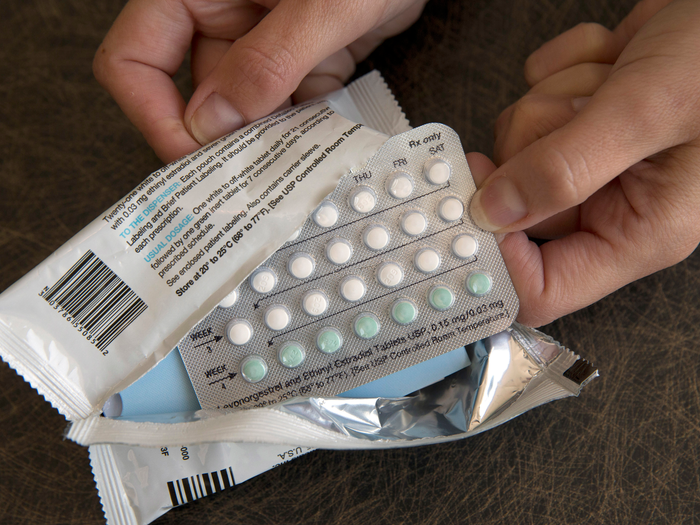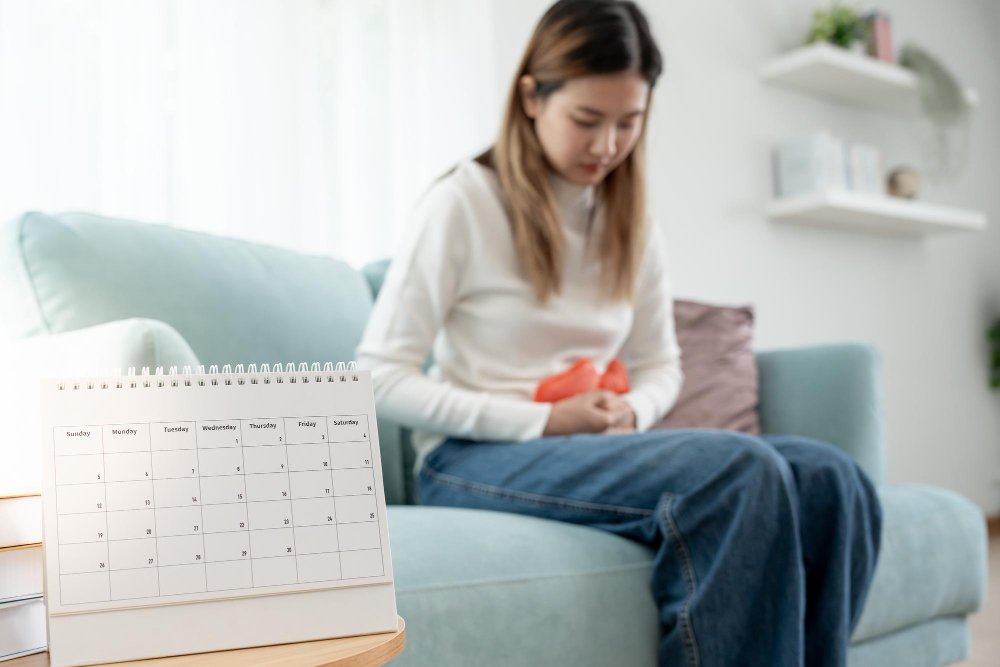Switching between different types of birth control pills—such as moving from the combined pill (which contains both estrogen and progestin) to the mini pill (progestin-only), or vice versa—is a common decision for many women. This change may be prompted by side effects, medical conditions, age, or even lifestyle preferences like breastfeeding. However, as with any hormonal shift, the body often needs time to adjust. During this transition, it’s not unusual to experience a variety of side effects, some mild and others more disruptive.
Recommended: How to Switch from the Pill to an IUD
In this blog, we’ll break down the key differences between these two types of pills, highlight the most common side effects you might notice during the switch, and offer tips for managing them. Whether you’re switching for medical reasons or simply exploring your options, understanding what to expect can help you feel more in control and supported throughout the process.
Birth Control Pills
Birth control pills are a popular and effective method of preventing pregnancy, and they come in two main types: the combined pill and the mini pill.
- The combined birth control pill contains two hormones—estrogen and progestin—which work together to prevent ovulation (the release of an egg), thicken cervical mucus, and thin the uterine lining to reduce the chance of pregnancy.
- The mini pill, on the other hand, contains only progestin. It primarily works by thickening cervical mucus and thinning the uterine lining. In some cases, it may also suppress ovulation, but not as consistently as the combined pill.
Recommended: When Should I Start My Birth Control Pack?
Both types are taken daily, but the mini pill requires more strict timing because its effectiveness can drop if it’s taken more than three hours late.

People may choose one over the other based on their health needs. For instance, the mini pill is often recommended for breastfeeding mothers, those who can’t tolerate estrogen, or individuals at higher risk for blood clots. On the other hand, the combined pill may offer additional benefits like more regular periods, acne control, and reduced menstrual cramps.
Most Common Side Effects When Switching
When transitioning between the combined pill and the mini pill, it’s normal for your body to go through an adjustment phase. This hormonal shift can trigger a range of side effects—some expected, some surprising. While experiences vary from person to person, here are the most commonly reported symptoms during the switch:
1. Irregular Bleeding or Spotting
One of the most frequent side effects is unpredictable bleeding. This might show up as light spotting between periods, longer or shorter periods, or even skipped periods entirely. It’s especially common when switching to the mini pill, as it lacks estrogen, which normally helps regulate the menstrual cycle.
Recommended: Is the Copper IUD Better for Heavy Periods?
2. Breast Tenderness
Changes in hormone levels can make the breasts feel swollen, sore, or sensitive. This side effect usually resolves within a few weeks as your body gets used to the new pill.
3. Mood Changes
Some people experience mood swings, irritability, or increased emotional sensitivity during the switch. These mood shifts are typically temporary but can feel intense. If they persist or worsen, it’s worth discussing with a healthcare provider.
4. Headaches
Headaches are another common complaint, especially when switching from a higher-dose estrogen pill to a lower-dose or progestin-only pill. These can be mild and temporary or, in rare cases, more severe.
5. Nausea
Mild nausea is common when starting or switching hormonal birth control. It usually goes away after a few days but can be managed by taking the pill with food or at bedtime.
6. Acne or Skin Changes
Hormonal shifts can affect your skin. Some people may notice breakouts when switching to the mini pill, while others may experience clearer skin after starting a combined pill due to its estrogen content.
Recommended: What’s the Best Birth Control Method with the Least Side Effects?
Side Effects Specific to Switching to the Mini Pill
Switching from the combined birth control pill to the mini pill—which contains only progestin—can lead to some unique side effects due to the absence of estrogen. While many people tolerate the mini pill well, it’s important to know what to expect when making the transition.
1. Unpredictable or Frequent Bleeding

Irregular bleeding is the most common side effect of the mini pill. Unlike the combined pill, which usually offers more predictable monthly cycles, the mini pill can cause:
- Spotting between periods
- Extended periods
- Missed periods altogether
This happens because estrogen, which stabilizes the uterine lining, is no longer present.
2. Slight Weight Gain or Bloating
Some individuals report mild bloating or slight weight gain when switching to the mini pill. This can be due to fluid retention, hormonal changes, or increased appetite—though not everyone experiences this.
3. Acne Flare-Ups
Without the estrogen found in combined pills (which often helps clear skin), some users may notice more breakouts after switching to the mini pill, especially if they are acne-prone.
4. Mood Fluctuations
Although mood swings are possible on any hormonal birth control, some people report feeling more emotionally sensitive or irritable when taking the mini pill. This may improve with time or may require a different form of contraception if persistent.
Recommended: Can Birth Control Cause Extreme Fatigue?
5. Breast Tenderness
Due to progestin, some individuals notice soreness or tenderness in the breasts, especially during the first few weeks of the switch. This is usually temporary.
6. Headaches
Some users develop headaches during the adjustment period. These are usually mild, but if you experience migraines or intense pain, it’s important to consult a healthcare provider.
The mini pill is a great option for many people—especially those who are sensitive to estrogen or need a low-risk option while breastfeeding—but adjusting to it may take time. Monitoring your symptoms and sticking to a consistent daily schedule when taking the mini pill can help improve its effectiveness and reduce side effects.
Side Effects Specific to Switching to the Combined Pill
When switching from the mini pill (progestin-only) to the combined pill (which includes both estrogen and progestin), your body will begin adjusting to the presence of estrogen—a hormone that plays a major role in regulating your menstrual cycle and influencing several physical and emotional functions. While many people benefit from more regular periods and improved skin, some may experience temporary side effects during the transition.
1. Nausea
One of the most common early side effects is mild nausea, especially when first starting the combined pill. This is often due to the estrogen component and usually subsides after a few days. Taking the pill with food or before bed can help reduce this symptom.
2. Breast Fullness or Tenderness
Estrogen can cause the breasts to feel swollen, tender, or heavier than usual. This side effect typically fades within the first few weeks of use.
3. Spotting Between Periods
Even though the combined pill usually regulates your cycle better than the mini pill, breakthrough bleeding or spotting can occur in the first 1–3 months as your body adapts to the new hormone levels.
Recommended: How To Choose The Right Birth Control Method For You
4. Mood Changes
For some, the addition of estrogen may lead to emotional shifts like moodiness, increased sensitivity, or even improved mood. Everyone reacts differently, and keeping track of how you feel can help determine if this form of birth control is right for you.

5. Headaches or Migraines
The hormonal fluctuation from starting the combined pill may trigger headaches, especially in people who are prone to them. If you experience severe or frequent migraines after switching, speak with your doctor—it may not be the best option for you.
6. Changes in Libido
Some people notice a change in sexual desire after switching to the combined pill—either an increase or decrease. Hormonal birth control can affect sex drive differently for each person.
7. Improved Skin
One benefit of switching to the combined pill is that the estrogen component may reduce acne and lead to clearer skin over time. This is why some combined pills are even prescribed specifically to treat acne.
Recommended: Does Birth Control Pills Cause Weight Gain?
Overall, while the combined pill offers added cycle control and potential skin benefits, it also introduces estrogen-related side effects. Most of these are mild and resolve on their own, but it’s important to monitor your symptoms and speak to a healthcare provider if anything feels off or uncomfortable.
How Long Do These Side Effects Last?
The side effects experienced when switching between birth control pills are usually temporary as your body adjusts to the new hormone levels. For most people, this adjustment period lasts between 1 to 3 months, though it can vary depending on individual sensitivity, lifestyle, and previous hormonal exposure.
First Few Weeks:
- Mild nausea, breast tenderness, headaches, and spotting are most common in the early stages.
- Mood changes or fatigue may also appear as your body reacts to the hormonal shift.
By the Second Month:
- Your body often begins to stabilize, and symptoms like irregular bleeding, bloating, or emotional ups and downs start to fade.
- Some people may begin noticing positive effects—clearer skin, more regular periods, or improved mood.
After Three Months:
- For many, side effects have completely subsided by now.
- If symptoms persist beyond this point or become more severe, it’s important to check in with your healthcare provider. You may need a different pill formulation, dosage, or even a non-hormonal option.
Recommended: What Happens If You Take Expired Birth Control Pills?
Everyone’s body is different. While some may feel fine within a week, others may need the full three-month window—or even longer—for complete adjustment. Being patient and tracking your symptoms in a journal or an app can help you spot patterns and communicate more effectively with your doctor.
Tips for a Smooth Transition Between Pills
Switching between the combined pill and the mini pill doesn’t have to be stressful—especially if you plan your transition thoughtfully. Here are some essential tips to help your body adjust smoothly and reduce the chance of unpleasant side effects:
1. Follow Your Doctor’s Instructions Carefully
Whether you’re switching immediately or after a short break, your healthcare provider will guide you on the right timing to start your new pill. Taking it the wrong way could lead to hormonal imbalances or reduce effectiveness in preventing pregnancy.
2. Don’t Skip a Day
When switching pills, timing is crucial. Start the new pill right after finishing your last active pill (or as directed) to avoid gaps. Missing even a day can cause breakthrough bleeding or reduce protection.
Recommended: Can I Get Pregnant on Birth Control If I Miss One Pill?
3. Use Backup Contraception (Temporarily)
During the first 7 days after switching pills, it’s best to use a backup method like condoms—especially if you’re switching to or from the mini pill. This gives your body time to adjust while ensuring you’re still protected against pregnancy.
4. Track Your Symptoms
Keep a journal or use a period-tracking app to log any changes, such as bleeding patterns, mood shifts, skin issues, or headaches. This makes it easier to spot patterns and have informed conversations with your healthcare provider if needed.

5. Stay Hydrated and Eat Well
Drinking plenty of water and eating a balanced diet rich in fruits, vegetables, and healthy fats can help support your body through the hormonal transition. Nutrient-rich foods can also help reduce bloating and fatigue.
6. Manage Stress
Hormonal changes can amplify emotional responses. Practice stress-relieving activities like journaling, meditation, exercise, or deep breathing. A calm body adapts more smoothly to change.
Recommended: Can Birth Control Cause Mood Swings or Depression?
7. Be Patient With Your Body
Most side effects are temporary, but it may take time for your body to settle into a new routine. Be kind to yourself during this adjustment period, and don’t panic if things aren’t perfect right away.
8. Know When to Seek Help
If side effects feel severe, don’t go away after 3 months, or interfere with your daily life, don’t hesitate to reach out to your doctor. A different pill or birth control method may suit you better.
Conclusion
Switching between the combined pill and the mini pill is a common step in many people’s birth control journey, whether due to health reasons, side effects, or lifestyle changes. While your body may react with temporary side effects like irregular bleeding, mood shifts, or mild discomfort, most symptoms improve within a few weeks to a few months.
Understanding what to expect—and how to manage those changes—can help you feel more confident and in control. Always follow your healthcare provider’s guidance, give your body time to adjust, and don’t hesitate to speak up if something doesn’t feel right. Birth control should work for you, not against you—and the right pill is the one that fits your needs, your body, and your peace of mind.
